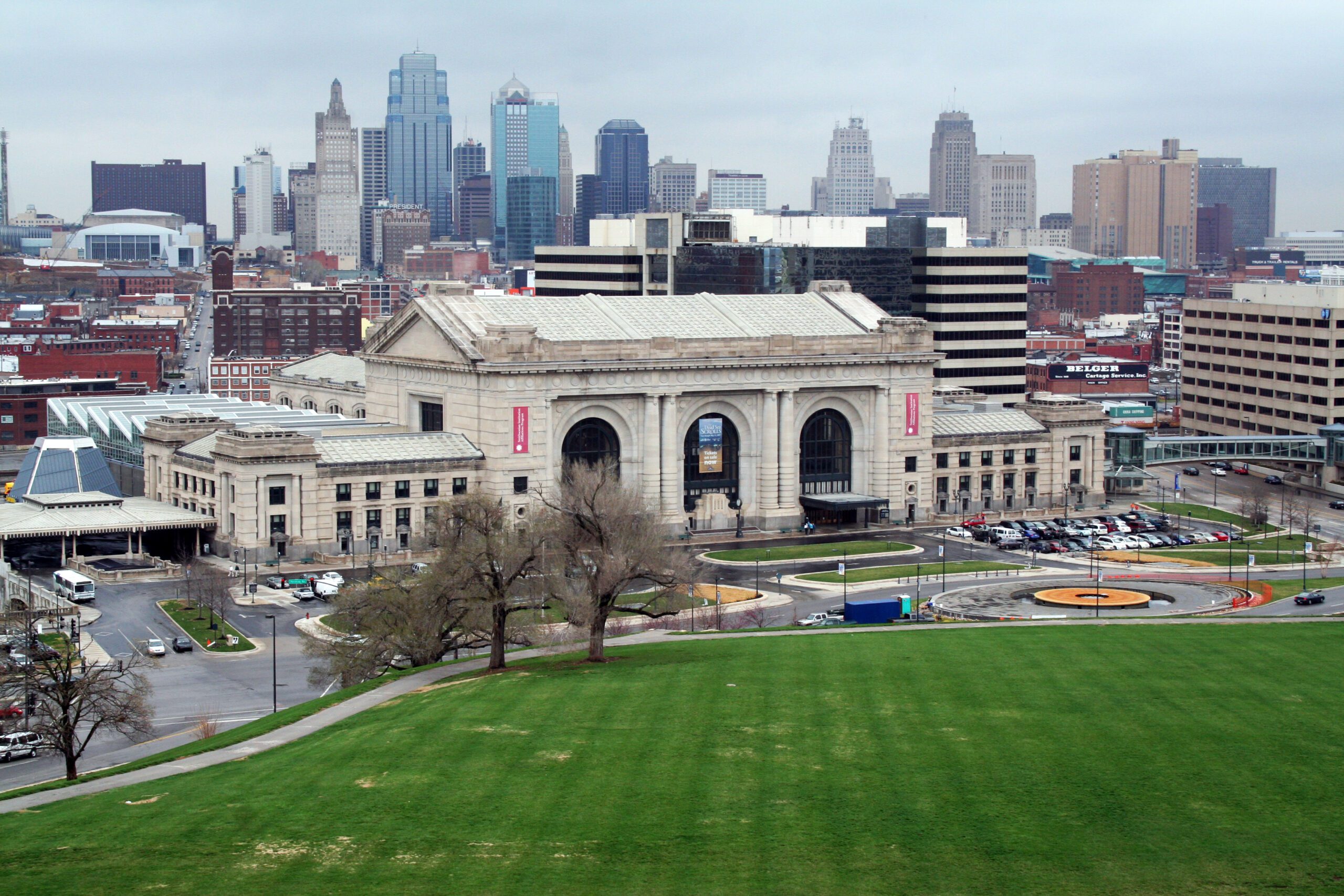Standing in awe of the grandeur of Kansas City’s Union Station, you’re seeing more than a hundred years of American transportation history. This iconic structure witnessed the golden age of train travel, suffered decades of decline, and emerged once again as one of the city’s most popular landmarks due to one of the country’s most successful historic preservation efforts.
The Grand Opening: A Monument to Progress
When Union Station opened on October 30, 1914, it represented the height of early 20th-century aspirations. The $6 million building, equivalent to over $150 million in today’s currency, was modeled in the Beaux-Arts style by Jarvis Hunt.
The building was massive in scale. The Grand Hall stood 95 feet high with a barrel-vaulted ceiling and space for a six-story building within it. Union Station was the second-largest train station in the US at 850,000 square feet and managed over 270 trains daily at its peak.
You can still see the original 3,500-pound clock that has timed Kansas City for more than a century and the lovely chandeliers that used to light the way for thousands of daily travelers.
Read More: The Craziest and Coolest Local Traditions in Kansas City
The Golden Age: America’s Crossroads
In its heyday from the 1920s to the 1940s, Union Station rightfully earned Kansas City its title of the “Heart of America.” Over 200,000 passengers passed through its portals daily, making it one of the nation’s most active transportation hubs.
The station witnessed countless historic events. Troops departed for two world wars from its platforms, and celebrities, politicians, and everyday Americans all shared the same grand waiting rooms. The Harvey House restaurant served up refined meals for travelers, setting standards for railroad dining that influenced American cuisine.
We have forgotten how central train travel was to American life. Union Station was not just a transfer point but a public place where Kansas City came to see and be seen.
Read More: KC Pride – See Why Our LGBTQ Festival is One of the Best in the Nation
The Decline: When America Chose Highways
The arrival of automobiles and air travel began Union Station’s gradual decline in the 1950s. Train travel, which had been the backbone of American transportation, couldn’t compete with air travel’s speed and convenience or the freedom of the interstate highways.
By 1979, Amtrak had reduced service to just two trains daily. The once-bustling concourses were vacant and rang with emptiness, and the grand building faced an uncertain future. Many comparable stations across America were demolished in the period, victims of changing transportation patterns and urban renewal initiatives.
The Restoration: A Community’s Vision
Rather than demolition, Kansas City chose preservation. In 1996, voters approved a bipartisan tax initiative to restore Union Station and transform it into a world-class entertainment and cultural destination.
The $250 million restoration preserved the building’s historic fabric while redeveloping it for modern uses. Original terrazzo floors were refurbished, intricate plasterwork was laboriously restored, and the Grand Hall was restored to its original glory.
Today’s Union Station: Past Meets Present
You’ll find that Union Station houses Science City, one of the Midwest’s premier interactive science museums, along with restaurants, shops, and meeting areas. The addition of experiential attractions like the planetarium and rail experience honors the building’s transportation history while serving present-day visitors.
The station continues to serve Amtrak trains, maintaining the original purpose while taking on new roles as a cultural destination and event facility. Wedding receptions in the Grand Hall create new memories in spaces where passengers used to wait for cross-country journeys.
A Model for Historic Preservation
Union Station’s resurgence demonstrates how historic preservation can revitalize entire districts while honoring the past. The project has generated millions of dollars in economic development and transformed Union Station into Kansas City’s most recognizable landmark.
Guests today experience history and innovation under one magnificent roof, demonstrating that our architectural heritage can be redeveloped to enrich generations to come while continuing to learn from our history.
Read More: Heart of America Shakespeare Festival – A Kansas City Must-See!





